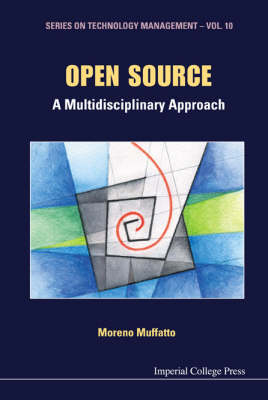
Open Source: A Multidisciplinary Approach
Seiten
2006
Imperial College Press (Verlag)
978-1-86094-665-3 (ISBN)
Imperial College Press (Verlag)
978-1-86094-665-3 (ISBN)
What is open source software? How is the open source community organized? What makes this model successful? What effects has it had and might it have on the future of the IT industry, companies and government policies? This book answers these and many other questions. It also gives a brief history of the open source community.
In recent years, the way open source software is developed has taken hold as a valid alternative to commercial proprietary methods, as have the products themselves, e.g., the Linux operating system, Apache web-server software, and Mozilla Firefox browser. But what is open source software? How is the open source community organized? What makes this new model successful? What effects has it had and might it have on the future of the IT industry, companies and government policies? These and many other questions are answered in this book.The first chapter gives a brief history of the open source community and the second chapter takes a close look at the relationship between intellectual property rights and software, both open source and proprietary. The next three chapters consider the who, the open source community, the how, software development both within and outside the community, and the what, open source projects and product quality. Chapters 6 and 7 focus on the different users of open source software: companies and governments respectively. These are followed by two chapters that interpret the phenomenon, first from an organizational point of view in Chapter 8 and then using the theory of complex adaptive systems in Chapter 9. The last chapter explores the current and potential applications of the concept underlying open source software in other fields.
In recent years, the way open source software is developed has taken hold as a valid alternative to commercial proprietary methods, as have the products themselves, e.g., the Linux operating system, Apache web-server software, and Mozilla Firefox browser. But what is open source software? How is the open source community organized? What makes this new model successful? What effects has it had and might it have on the future of the IT industry, companies and government policies? These and many other questions are answered in this book.The first chapter gives a brief history of the open source community and the second chapter takes a close look at the relationship between intellectual property rights and software, both open source and proprietary. The next three chapters consider the who, the open source community, the how, software development both within and outside the community, and the what, open source projects and product quality. Chapters 6 and 7 focus on the different users of open source software: companies and governments respectively. These are followed by two chapters that interpret the phenomenon, first from an organizational point of view in Chapter 8 and then using the theory of complex adaptive systems in Chapter 9. The last chapter explores the current and potential applications of the concept underlying open source software in other fields.
History of Open Source; Software and Intellectual Property Rights; The Organization of the Open Source Community; Software Development Models; Open Source Products and Software Quality; Strategies and Business Models; Government Policies Towards Open Source Software; New Trends in Work Organization; Open Source as a Complex Adaptive System; Developments.
| Reihe/Serie | Series on Technology Management ; 10 |
|---|---|
| Verlagsort | London |
| Sprache | englisch |
| Themenwelt | Informatik ► Office Programme ► Outlook |
| ISBN-10 | 1-86094-665-8 / 1860946658 |
| ISBN-13 | 978-1-86094-665-3 / 9781860946653 |
| Zustand | Neuware |
| Haben Sie eine Frage zum Produkt? |
Mehr entdecken
aus dem Bereich
aus dem Bereich
Buch | Softcover (2022)
Markt + Technik Verlag
CHF 20,90
Band 1: Grundlagen des digitalen Zeitalters
Buch | Softcover (2024)
Springer Gabler (Verlag)
CHF 69,95


